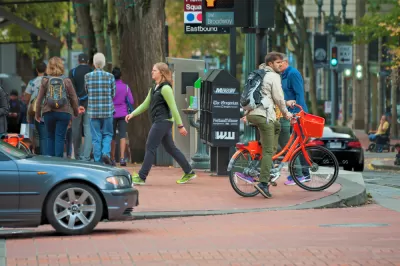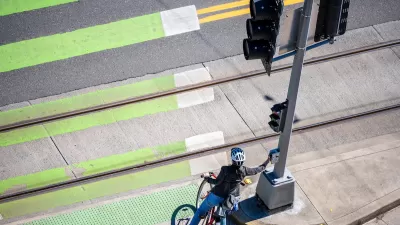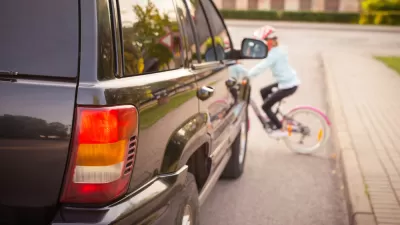In spite of the city's commitment to Vision Zero goals, more people died on Portland's streets than anytime in the last thirty years, with unhoused people most vulnerable to traffic violence.

According to an article from KATU, "Portland saw its highest traffic death toll in three decades, with 63 people killed in crashes on city streets throughout 2021." The recent Vision Zero report from the Portland Bureau of Transportation, where the statistic comes from, also noted that one in three people killed were experiencing homelessness (this number rose to 70 percent for pedestrian deaths). Black and Latinx populations were also overrepresented in traffic deaths.
Despite the city's stated Vision Zero goal, "Traffic deaths on state highways surged during the coronavirus pandemic, PBOT said, with 32 traffic deaths in 2021 compared to the average of around 17 over the previous four years." PBOT says that 60 percent of fatalities occurred in a small group of the city's most dangerous corridors, known as the High Crash Network, which includes 30 streets and intersections. "PBOT said this shows the need to continue to 'change the design of these streets to slow speeds and protect pedestrians.'"
Transportation commissioner Jo Ann Hardesty called Vision Zero a "work in progress," pointing to a recent emergency budget amendment that added $450,000 in funding to "rapid safety improvements" in the High Crash network.
The report also mentions the "complex set of social factors that have contributed to the spike in traffic deaths since the onset of the pandemic," citing "lack of shelter, medical care, and social services for houseless people" as contributing factors.
FULL STORY: Portland traffic deaths hit 30-year high, a third of those killed were homeless

Planetizen Federal Action Tracker
A weekly monitor of how Trump’s orders and actions are impacting planners and planning in America.

Restaurant Patios Were a Pandemic Win — Why Were They so Hard to Keep?
Social distancing requirements and changes in travel patterns prompted cities to pilot new uses for street and sidewalk space. Then it got complicated.

Map: Where Senate Republicans Want to Sell Your Public Lands
For public land advocates, the Senate Republicans’ proposal to sell millions of acres of public land in the West is “the biggest fight of their careers.”

Maui's Vacation Rental Debate Turns Ugly
Verbal attacks, misinformation campaigns and fistfights plague a high-stakes debate to convert thousands of vacation rentals into long-term housing.

San Francisco Suspends Traffic Calming Amidst Record Deaths
Citing “a challenging fiscal landscape,” the city will cease the program on the heels of 42 traffic deaths, including 24 pedestrians.

California Homeless Arrests, Citations Spike After Ruling
An investigation reveals that anti-homeless actions increased up to 500% after Grants Pass v. Johnson — even in cities claiming no policy change.
Urban Design for Planners 1: Software Tools
This six-course series explores essential urban design concepts using open source software and equips planners with the tools they need to participate fully in the urban design process.
Planning for Universal Design
Learn the tools for implementing Universal Design in planning regulations.
Heyer Gruel & Associates PA
JM Goldson LLC
Custer County Colorado
City of Camden Redevelopment Agency
City of Astoria
Transportation Research & Education Center (TREC) at Portland State University
Camden Redevelopment Agency
City of Claremont
Municipality of Princeton (NJ)





























